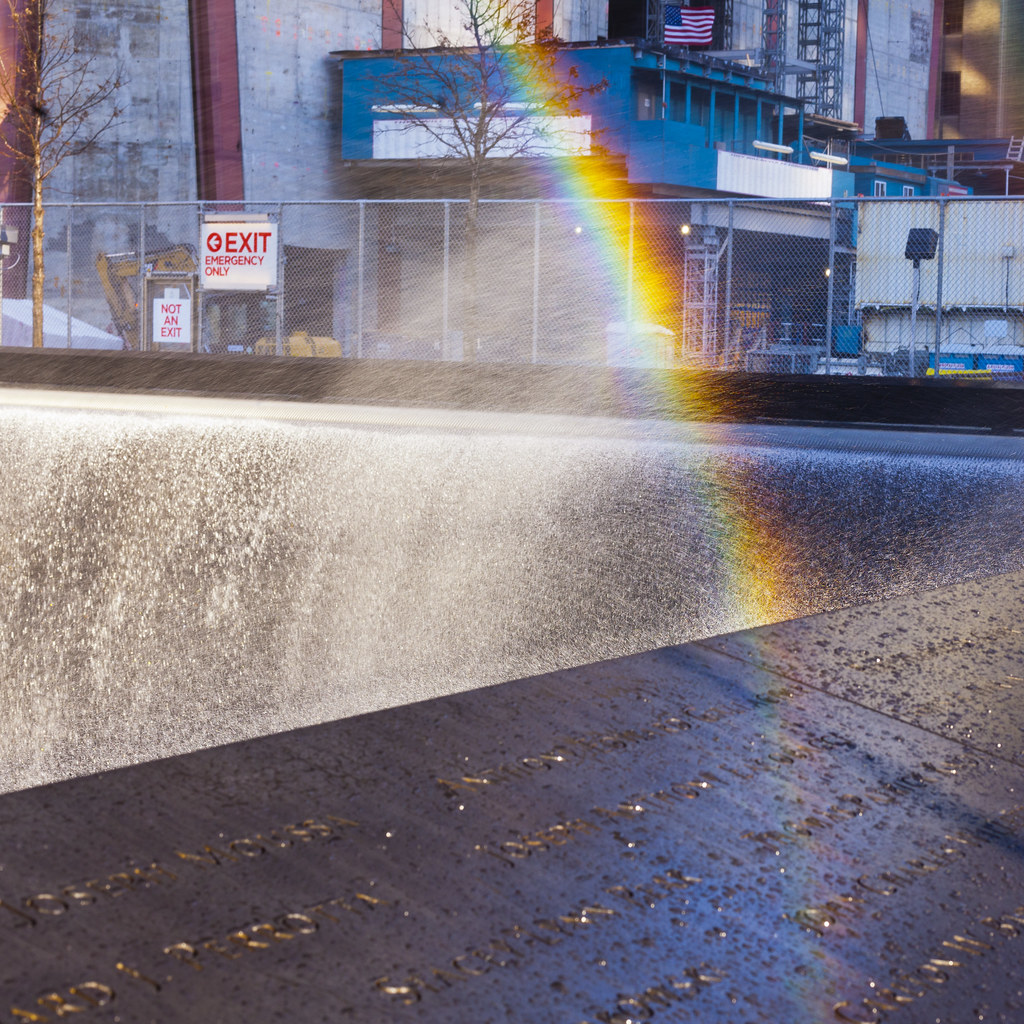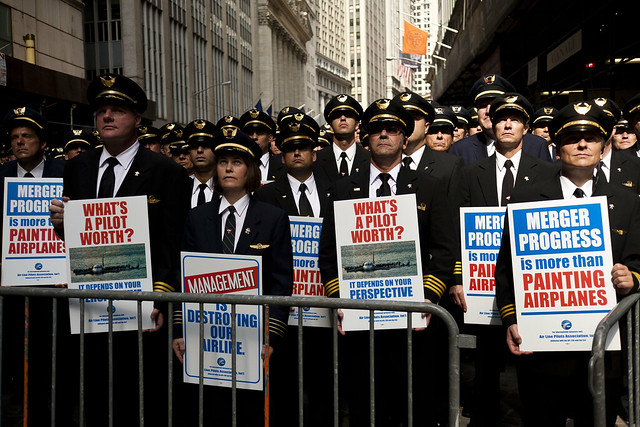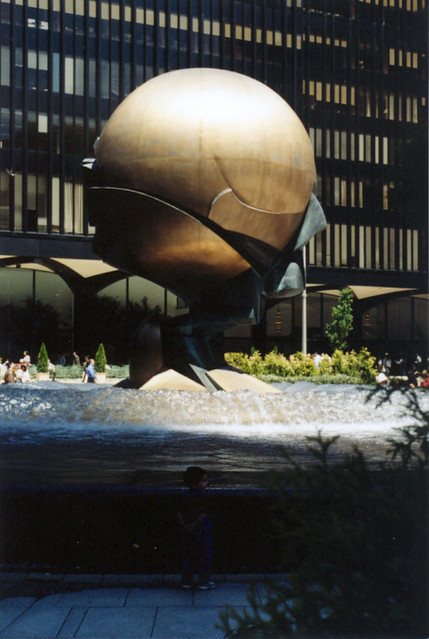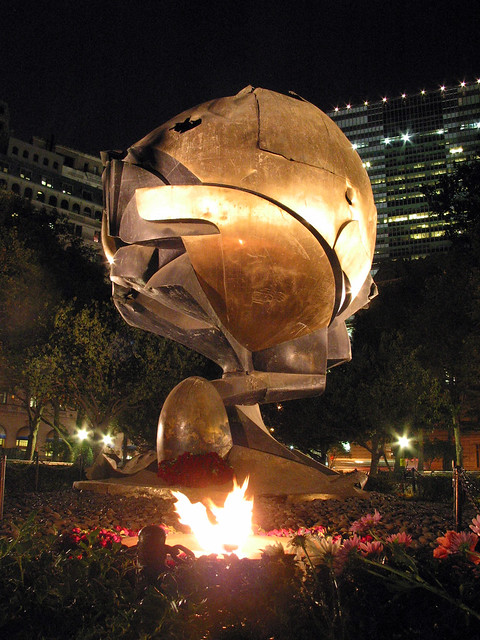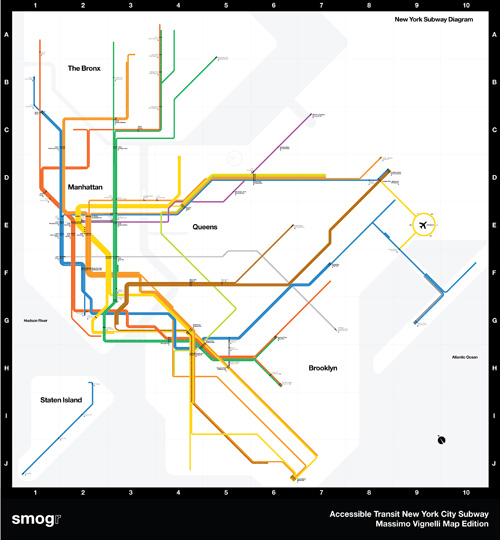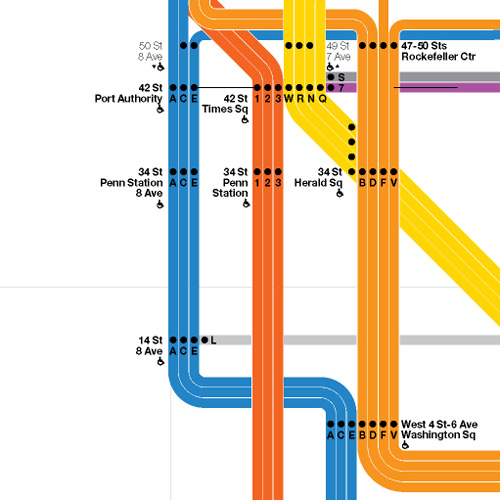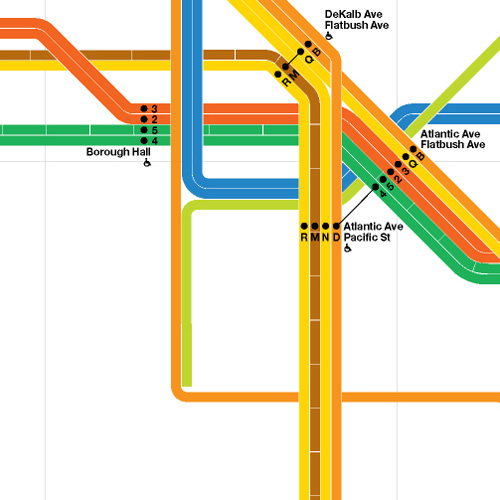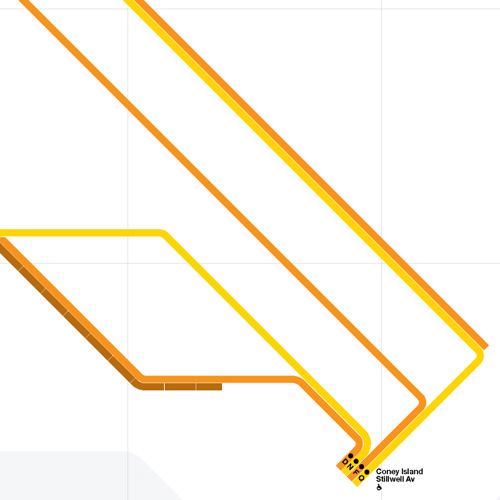Tag: NYC
NYC grid everywhere: Mumbai, India

What does the New York City grid look like if we extend it throughout the world? Well, Extend NY helps visualize what those streets look like.
Right now I’m at the intersection of East 74,461 Ave and 94,097th Street. Which subway should I take home?
To the Bravest: An Open Letter to the NYPD
Portraits from Occupy Wall Street, Volume 4, a photo by joe holmes on Flickr.
An Open Letter to the Men and Women of the New York City Police Department:
American citizens have a right to assemble in public in order to communicate with one another and with their elected leaders. The right to public assembly is not a right to assemble for a second, or an hour, or a day. As Americans, we have a right to assemble until we are satisfied that our voices have been heard, and that our leaders are sustaining, not destroying, our safety and our livelihoods.
This is the key issue: freedom of assembly should not be beholden to bureaucracy which says you need to fill out some paperwork so you can speak your mind at set time, at a set place, for a set amount of time.
The fear is almost palatable seething from some quarters because of the sustained protest: this is fear of people in space; of people joined together, sometimes breaking into spurts of anarchy, but nonetheless joined together under one banner.
Change doesn’t come from the end of a barrel, it comes from the look in people’s eye.
You should really check out Joe Holmes’ Portraits from Occupy Wall Street: Volume 1, Volume 2, Volume 3 & Volume 4.
Occupy Wall Street: A Village Forms
Even though the New York Times coverage of Occupy Wall Street has been negative, basically calling protestors uninformed patchouli-smelling hippies, the latest dispatch from Occupy Wall Street talks about how the protesters have formed a village in Zuccotti Park:
There are information stations, a recycling center, a media center where a gasoline generator powers computers. At the east end sits the library, labeled cardboard boxes brimming with donated books: nonfiction, fiction, poetry, legal. There is a lost and found.
A medical station was outfitted with bins holding a broad array of remedies: cough drops, Maalox Maximum Strength, Clorox wipes, bee pollen granules. The main issues have been blisters, including some from handcuffs, and abrasions.
There are also a few therapists. Some out-of-work protesters are depressed. They need someone’s ear.
Elsewhere is a sanitation station, with designated sanitation workers who sweep the park. The park is without toilets, a problem that many of the protesters address by visiting a nearby McDonald’s.
The encampment even has a post-office box, established at a U.P.S. store, and has been receiving a steady flow of supportive letters and packages. Someone from Texas sent a bunch of red bandanas, now draped on the necks of demonstrators. Others have sent camera batteries, granola bars and toothbrushes.
Two General Assembly meetings are held each day to conduct organizational business and work on objectives. “We meet every day to decide what our demands are,” said Hero Vincent, 21, an artist and singer from Charlotte, N.C., who has been here from the beginning.
Not allowed to use amplified sound, the protesters have devised their own means of communication. Each speaker says a sentence, and then everyone else repeats it, so it ripples outward. Decisions must be by consensus. Hand signals convey responses. For instance, holding your palms upward and wiggling your fingers means approval, while holding them downward means disapproval. Level hands mean uncertainty.
Yet words such as hodgepodge and granola pepper descriptions of the protestors. Yet when the Tea Party was chanting racist slurs nary a word was said. Perhaps something about the lily-white and middle-aged nature of the Tea Party made that protest acceptable, but the diverse and young crowd at Occupy Wall Street deserve scorn.
And now they have a newspaper: The Occupied Wall Street Journal.
Remember
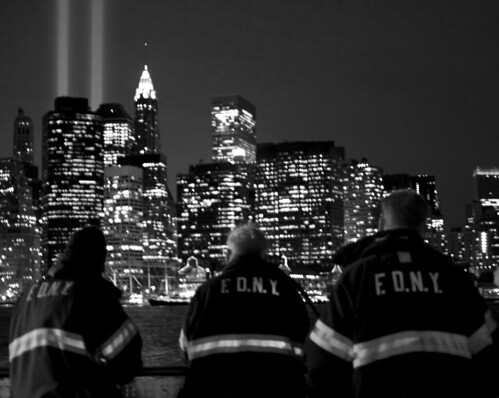
Tribute in Light, a photo by plemeljr on Flickr.
Remembering – The Sphere
Up and Down From Ground Zero
Mindrelic – Manhattan in Motion
Accessible Transit Massimo Vignelli NYC Subway Map Edition
This is the third installment of my Accessible Transit Map series. Intended as a replacement map for those with disabilities, this map illustrates which station stops on the New York City Transit Authority’s system is accessible for those with strollers or with a disability.
This map is special: it is the updated system map by Massimo Vignelli, a design which is beautiful but which I have been a vocal critic of. For those who don’t know about Vignell’s 1972 map, read Michael Bierut’s history, Mr. Vignelli’s Map which is very well written.
As in previous maps, I have removed all stations which are not handicapped accessible. Maps represent corporeal objects, through convenient fictions; a representation which works for a majority of its users. But where are the maps for the disabled or those require additional accessibility? Wouldn’t the mother with newborn in stroller need a different map then those without the need to lug all the accoutrement’s of childhood? Equally, those in a wheelchair require a map different then one which the walking can use. I decided to rectify the situation by editing the maps of major metropolitan transportation systems, in order to create a map for those who are not represented on the official map.
Here are details of the map:
Midtown Detail
Brooklyn Detail
Coney Island Detail
From the three details shown above the system map gradually becomes more beautiful as you strip information away; as more and more stations are removed, the system becomes more diagrammatic and pure. This is the issue I have with Vignelli’s original, and update map: the subway is not an abstract diagram, no matter that the designer wishes it to be. No matter that Vignelli has created a masterpiece of design, the system will never be forced into the visual language that London’s Underground uses so successfully. As so it will be: the historical traces of over one hundred years of service, created by three different companies, will continue to bleed through time into today’s maps.
Feel free to download the map in pdf format: Accessible Transit Massimo Vignelli NYC Subway Map Edition.
Other Accessible Transit Maps for your perusal:
Please see also:
- United Nations expands Australia’s territory
- London Underground Map formatted for iPhone
- Comparing NYC & Washington DC – Area, Population, Density & Average Income
- Getting Real: Reflecting on the New Look of National Park Service Maps
- Radical Cartography: Building Heights as indirect measure of land value
- The 51st State – State of New York City
- Interstate Infrastructure
BQE Figure-Ground


